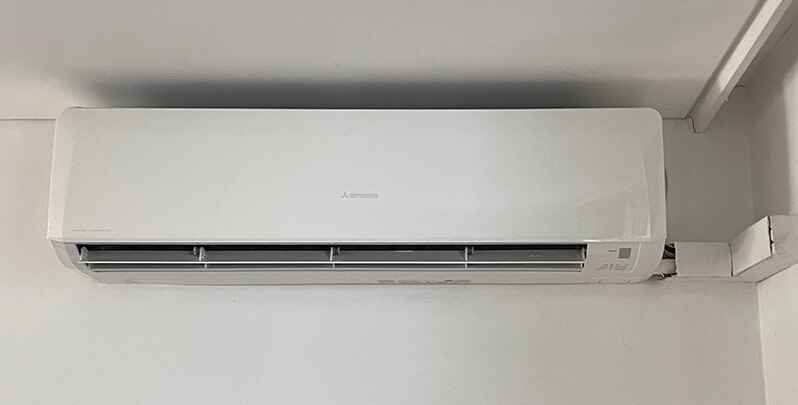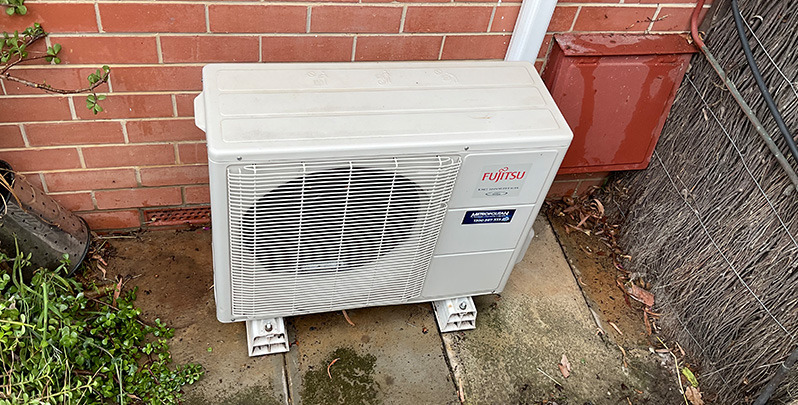
Choosing the Right Location for Air Conditioner Installation
Have you ever wondered where to put that magical device that brings cool relief during scorching summers? That’s right; we’re talking about air conditioners.
When it comes to air conditioner installation, finding the perfect spot can be a head-scratcher. Should you place it near a window? How about in the corner of the room? The possibilities are endless, but fear not.
Explore the factors to consider when selecting the ideal location for your air conditioning system. Whether installing a split system air conditioner, a ducted system, or a portable unit, this guide will help you make an informed decision that ensures comfort and savings for years.
Factors to Consider when Choosing the Right Location
By understanding the unique requirements of these air conditioning systems, you can make an informed decision and ensure a successful installation.
1. Split System Air Conditioners
Split systems consist of two main components: an indoor unit and an outdoor unit. These units are connected by refrigeration piping and interconnecting cables. The indoor unit is typically installed on a wall in the room to be cooled, while the outdoor unit is placed outside the building. When choosing the location for a split system air conditioning unit, considerations include accessibility for maintenance, proper clearance for airflow, noise levels, and aesthetics.
2. Ducted Air Conditioning Systems
Ducted air conditioning systems are designed to cool an entire house or multiple rooms. They consist of a central unit connected to a series of ducts that distribute cool air throughout the building. The central unit, usually installed on the roof or under the floor, requires sufficient space and accessibility for maintenance. The placement of ducts and vents should be carefully planned to ensure effective cooling in each room.
3. Portable Air Conditioners
Portable air conditioners offer flexibility as they can be moved from room to room. These units typically come with a window venting kit that exhausts warm air outside through a window. When choosing a location for a portable air conditioner, consider proximity to windows for easy venting, availability of power outlets, and the unit’s size in relation to the room’s cooling requirements.
Size of the Room
An air conditioner’s cooling capacity should match the room’s size. Consider the square footage and ceiling height to determine the appropriate unit size. Additionally, the positioning of the indoor unit should allow for even airflow distribution throughout the space.

Efficiency and Performance
Placing the outdoor unit in a shaded area can enhance its efficiency by preventing it from being exposed to direct sunlight. Ensuring adequate clearance around the unit is important to promote proper airflow and ventilation. Positioning the indoor unit away from direct sunlight and heat sources, such as appliances or windows, will improve its cooling efficiency.
Noise Considerations
Air conditioning units can generate noise during operation. To minimise the impact on your living space, choose a location for the outdoor unit away from bedrooms, living areas, or neighbouring properties. Indoor units can also produce noise, so consider their placement in areas where silence is valued.
Accessibility
Ensure that the chosen location provides easy access for maintenance and servicing. This includes sufficient space for professional air conditioning installers to perform routine maintenance or repairs.
Aesthetics
While functionality is important, aesthetics also play a role. Choose a location that doesn’t disrupt the overall visual appeal of your property, considering factors such as wall mounting brackets and cable ducting.
The Impact of Location on Energy Bills
The impact of location on energy bills cannot be underestimated regarding air conditioning units. The proper placement of these units can substantially affect energy consumption, which directly translates to electricity bills. By considering the following factors, you can optimise the efficiency of your air conditioning system and potentially save on energy costs.
Shaded Outdoor Unit
Placing the outdoor unit in a shaded area can significantly improve its efficiency. When exposed to direct sunlight, the outdoor unit absorbs heat, causing it to work harder to cool the refrigerant. This increased workload leads to higher energy consumption.
By positioning the outdoor unit in a shaded spot, such as under an awning or in a strategically landscaped area, you can reduce its exposure to heat. As a result, the unit operates more efficiently, consuming less energy to achieve the desired cooling effect.

Avoiding Direct Sunlight on Indoor Unit
Like the outdoor unit, the indoor unit should also be shielded from direct sunlight. When the indoor unit is exposed to sunlight, it absorbs heat, which makes it more difficult for the system to cool the room effectively. As a result, the air conditioning unit has to work harder and consume more energy to maintain the desired temperature.
Place the indoor unit away from windows or direct sunlight to prevent unnecessary strain on the system and reduce energy consumption. This will help it operate more efficiently, providing effective cooling without excessive energy usage.
Proper Insulation
In addition to the placement of the units themselves, it’s important to consider the insulation of the surrounding areas. Insulating the room’s walls, ceiling, and windows being cooled can greatly improve the air conditioning system’s efficiency.
Proper insulation prevents cool air from escaping and warm air from entering the room, reducing the workload on the air conditioner. As a result, the system operates more efficiently and consumes less energy to maintain the desired temperature.
Ductwork and Airflow
For ducted air conditioning systems, ensuring proper insulation and sealing of the ductwork is essential. Leaks or insufficient insulation can lead to air loss, forcing the system to work harder to compensate for the wasted cooled air.
Additionally, optimising the airflow by strategically placing vents and registers can help distribute cool air evenly throughout the room or building, reducing the need for the air conditioner to operate at maximum capacity.
It’s important to consult with professional air conditioner installers who can provide expert advice on the best location and setup for your specific needs. Their knowledge and experience will help ensure that your air conditioning system operates efficiently and cost-effectively, providing a comfortable environment while keeping energy bills in check.
Ensuring Trade Compliance and Professional Installation
Hiring professional air conditioning installation services is essential to ensure trade compliance and the proper structure of your unit. They have the knowledge and experience to install the system correctly, following industry standards and guidelines.
Additionally, professional installers can help you navigate any regulatory requirements or obtain necessary permits, such as an air conditioning license, ensuring a hassle-free installation process.
Remember, proper placement of the indoor and outdoor units, along with professional installation, is key to maximising the lifespan and effectiveness of your air conditioner. With careful planning and consideration, you can enjoy the perfect climate control in your home for years.
Optimising Comfort and Savings with Metro Heating and Cooling
Choosing the right location for air conditioner installation is a critical decision that can significantly impact energy consumption, efficiency, and cost-effectiveness. With Metro Heating and Cooling, you can rely on our expertise to guide you.
Trust Metro Heating and Cooling for professional advice and quality installation, ensuring your air conditioning system operates efficiently and effectively in the ideal location. Make the right choice and enjoy a cool and comfortable environment with Metropolitan Heating and Cooling.
Please note: This information is provided for advice purposes only. Regulations differ from state to state, so please consult your local authorities or an industry professional before proceeding with any work. See our Terms & Conditions here.
Published: 4 September 2023